“If you put a hamburger on the menu you want to make it the best hamburger that can be possibly made. Everything has to be a representation of you. It has to be the very best it can be.”
Paul Bentley, Executive Chef, Bovine
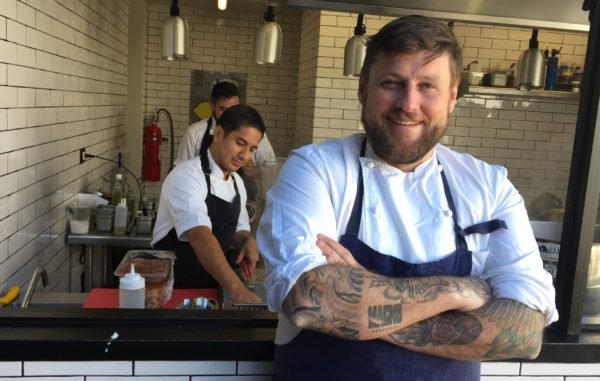
Bovine opened in September, the third restaurant in Paul Bentley’s portfolio. The Aussie chef, who arrived in Mexico via New York, also has Mi Amor in Tulum and Magno (named best new restaurant last year by Travel + Leisure magazine) in Guadalajara. Bovine is a collaboration between Chef Bentley and Bruce James, the man who brought superstar Mexican chef Enrique Olvera to the restaurant Moxi in San Miguel de Allende’s Hotel Matilda.
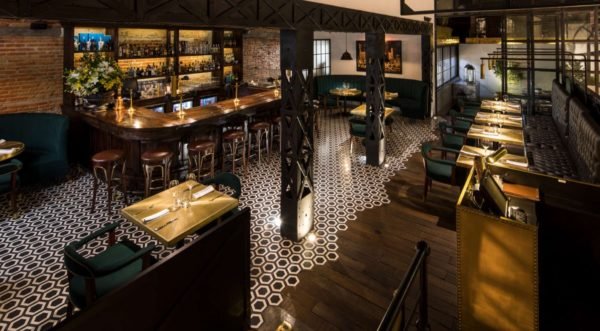
The first time I walked into Bovine I was confused. I walked into what looked like an upscale bar, the kind of bar you might see in a swank, big city hotel.
“Is the restaurant upstairs?”, I asked the hostess.
“No”, she said, “this is the restaurant”.
I’m not sure what I expected. With the word bovine, perhaps a contemporary take on a traditional steak house. But this is no steakhouse. There are no deep red tablecloths with butterflied napkins in oversized Bordeaux glasses. No foot long, wooden-handled knives. No tuxedoed waiters with three foot tall pepper grinders. No gold flock wallpaper. No hundred page wine list in an embossed leather cover.

When I sat down and chatted with Paul Bentley recently, he told me, “It’s more of a brasserie than a steakhouse. Yes, we focus on meat but we’re definitely not a traditional steakhouse.”
Included in the beef offerings are a rib eye, a New York strip, a bavette and short ribs. Plus there’s a rack of lamb and suckling pig. Choose one of those mains, a couple of sides, an appetizer and dessert, and you’re into about $1000 a person before drinks and tip. That puts it into the splurge category on my budget, a special occasion place, the kind of restaurant I can afford three, maybe four times a year.
But below the list of mains there is a less expensive dish that you can enjoy with a couple of beers and get out for not much more than $500 a person.
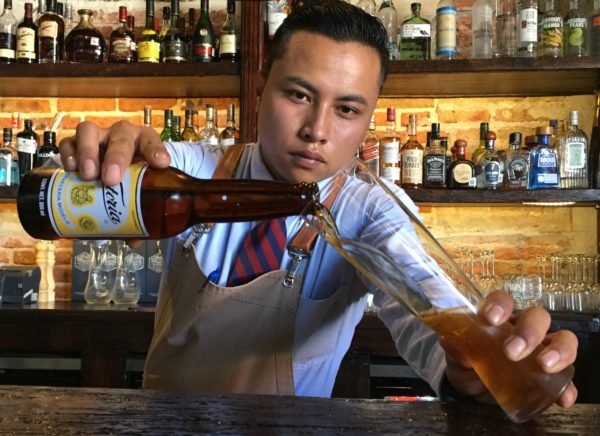
The burger. It’s one of my top ten things to eat. It’s one of Don Day’s Wife’s top ten things to eat. There’s a good possibility it’s one of your top ten things to eat. Once considered the food of the common man, it’s now on the menu of many of the restaurants where the wealthy dine. And it’s on Bovine’s menu for $275 for the small or $390 for the large.
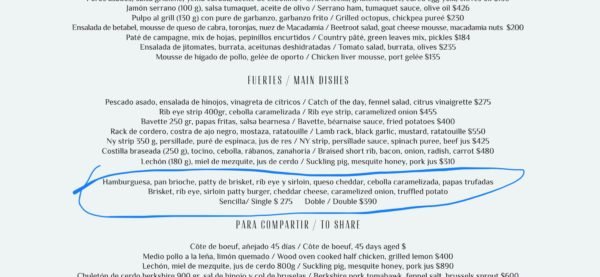
Size is a tough choice at Bovine because the small, with about 125 grams of beef, is not quite big enough for me; the large, at 250 grams, is a bit too big. When in doubt, I go big.
Now $390 may seem pricey at first. Particularly when you can still get an edible burger (at Ruta 111) for $55. But in Toronto, I know a place similar to Bovine (Bymark) where the burger is priced at $38 Canadian which translates to $565 in Mexican pesos. And even at Fat Boy in San Miguel, where the look is 20th Century chopper not 21st Century chic, their very good burger is now $239.
“Yes, it’s expensive but when you look at the ingredients that are in it, the costs are the costs”, Paul Bentley said to me. “It’s not fast food. It’s not for everybody. But I think when you eat it, you’ll agree it’s worth it.”
“Worth” really is the key word. Is the pleasure received worth the money paid? Do you get greater value in terms of personal satisfaction than you would from a less expensive burger?
Chef Bentley suggested we “look at the ingredients” and when I look at a burger, the first place I look is the meat. A burger isn’t just mainly about the meat, to steal an old advertising tagline, it’s almost all about the meat.
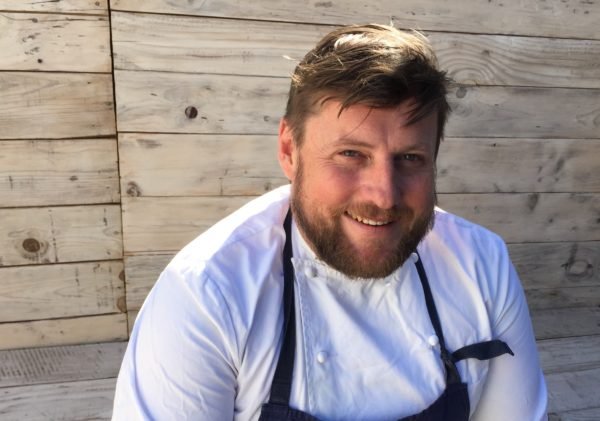
“Most of my beef comes from the United States”, said the chef. “It’s primarily because it’s more consistent. I have some Mexican suppliers and they let me know when they have something exceptional. Some comes from near Guadalajara; some from Sonora. I hope we can source more from even closer to San Miguel but right now it’s almost all U.S.”
Imported beef is almost twice the price of Mexican and, with some cuts, almost twice as good. So that certainly helps justify the price. I asked Chef Bentley about some of the other things that influence the taste and cost of ground meat, the parts of the cow, the aging, the fat content and the spicing.
“We use chuck, brisket and ribeye and then all the scraps from finishing the dry-aged beef”, said the chef. “All of the final trimming on our ribeye and New York cuts is done here in house so there’s quite a bit that makes it into the burgers.”
“The brisket all comes from the U.S., so there’s already a decent amount of fat content…more than you’d get from local cows”, continued Paul Bentley. “We do all the grinding here, a medium grind, so, if it’s very lean, we’ll add a little fat. Our aim is to end up at around a 5 to 10% fat ratio.”
“And what about the aging of those steak trimmings?”, I asked Chef Bentley.
“Some of the meat we buy is partially aged and, depending on the cut, we may give it some more aging time”, he replied.
“Wet or dry?”, I asked.
“It’s always dry-aging, never wet”, said Chef Bentley. “Ideally I like to have it aged between 30 and 45 days. Anything more than 45 days and the meat is more like cheese.”
“As far as grass-fed or corn-fed”, the chef continued, “there are cuts where fat content is vitally important. Our bavette works fine with grassfed. The bavette is, in my opinion, the tastiest steak cut you can ever eat but it’s not as dependent on marbling. The other cuts though I think require at least being finished on corn. What’s most important when you’re running a restaurant is consistency and taste.”
Now consistency I can’t vouch for because, so far, I’ve had exactly one Bovine burger. But taste I can talk about.
When I ordered my burger, the very efficient and well appointed server didn’t ask how I would like it cooked. That’s a confident kitchen I thought. It surprisingly came well done which was fine with me (but wouldn’t be with everyone). I’m fine with well done as long as the beef remains juicy and this beef was very, very juicy.
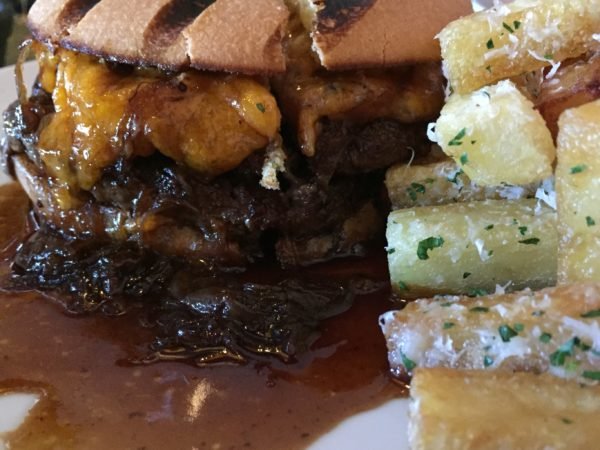
The burger meat was lightly seasoned with salt and pepper with no other spices that I could decipher. I could detect the rich taste that aging brings to meat; there was a light char that added to the taste; and the fat content contributed to the moistness and the richness of the taste. It was, in short, a superb piece of ground meat.
As far as the rest of the burger was concerned, to me, the bun is not particularly important. It’s only the carrying case for the precious goods inside. It should be seen but barely tasted and Bovine’s barely does.
“It’s a house-made bun”, said Chef Bentley. “It’s like a brioche…less milk…less eggs. It’s a soft bun but when we toast it, it adds a nice crisp.”
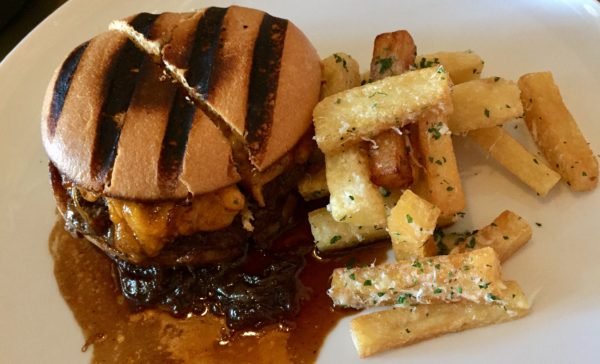
I liked that the size of the bun was almost exactly the same diameter as the burger (I dislike undersized and despise oversized). I’m not big on sugar in my brioche dough but I presume that’s what most people want and the bread did have a light and fluffy texture. The toasting did add a flakiness to the crust but it also added some burn to the flavor.
You will need a knife and fork before you get through the burger as the bun did fall apart about halfway through eating it. It was a nice sacrifice when you consider it was mostly because of those delicious meat juices.
As far as dressing the burger, Bovine has made a bold move by deciding that a burger is best with only cheddar (medium-aged I would guess) and caramelized onions (that came swimming in a wonderfully rich beef juice) and not listing any other possible add-ons on their menu.
“My wife likes her onions raw not fried”, I said to Chef Bentley. “Would the kitchen do that for her?”
“Of course”, said the chef.
“And if I wanted mustard?”
“No problem”, said the chef.
“And if someone wanted ketchup?”
“Well that I might suggest we put on the side”, he said with a bit of a smirk.
So back to that value proposition. Was my burger worth $390? Yes, it was. But that doesn’t mean I’m going to give up $100 burgers. Or even $50 burgers. It simply means that when I want a burger that’s very special, in a classy but relaxed environment, it will be at Bovine.
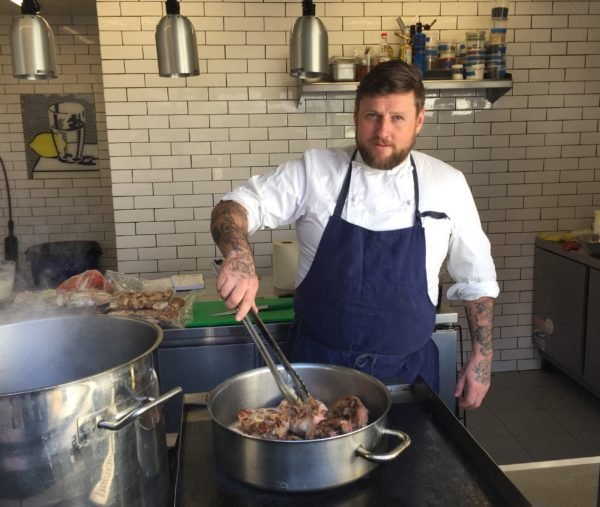
I’ll close with Paul Bentley’s words:
“You can enjoy Bovine at different levels. I want people to feel comfortable, if they’re just having a couple of cocktails and a few oysters at the bar, or sharing a couple of dishes, or experiencing what I hope is the best hamburger in town.”

Bovine is located at Canal #16 in San Miguel de Allende, Mexico. They are open for lunch and dinner Wednesday through Sunday. Dinner only on Tuesday. Closed on Monday.

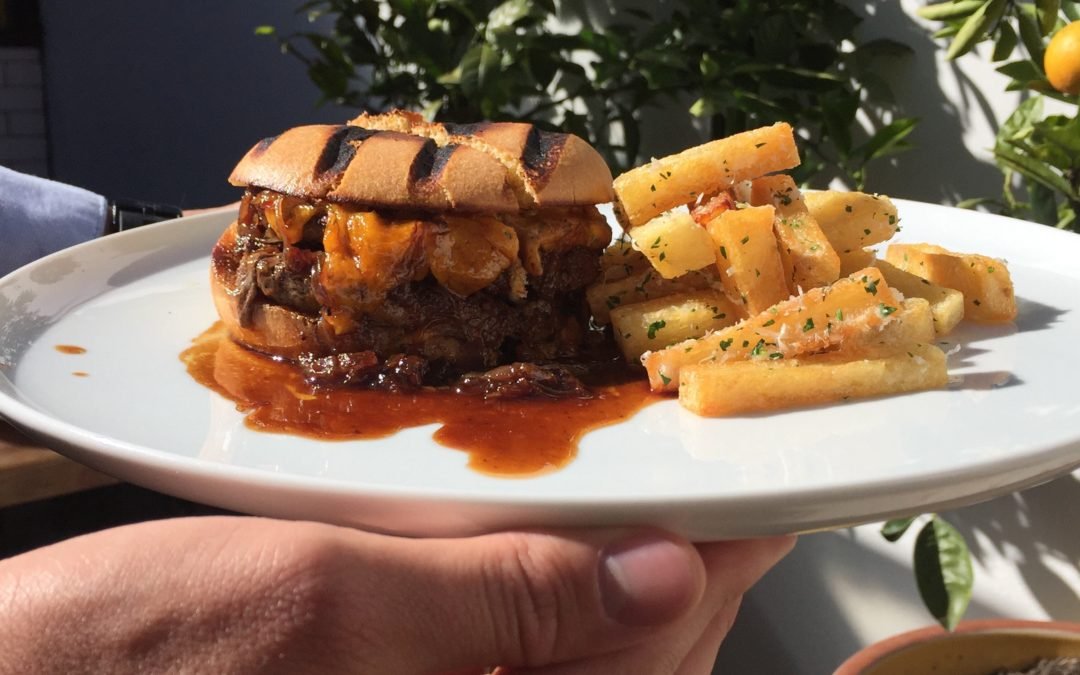
FOR MY $$$ BURGERS ON THE ANCHA OUTSIDE -50 PESOS AND GOOD WINGS AND FRIES
Do these types of restaurants really improve the experience of San Miguel ?
Not my San Miguel. But, I think, more and more, other people’s San Miguel.
And to think that the location of Bovine was originally slated to be a McDonald’s franchise. Yes, dozens of us spent almost one year fighting against that hamburger joint, and won.
Is San Miguel better for it? You be the judge.
They may not have 3 feet long pepper grinders but they certainly have foot tall Pilsner glasses! 😉
Any place which has the F word in big fluorescent lighting next to the stairway leading to this restaurant is a disgrace. Even the clothes (?) shop in the front had a T-shirt in the front entranceway with sh*t in large letters written on it. A ‘burger should never be served on a brioche bun.
It should always be served on brioche… Is it a restaurant or a church?
Good food but over priced for the experience!